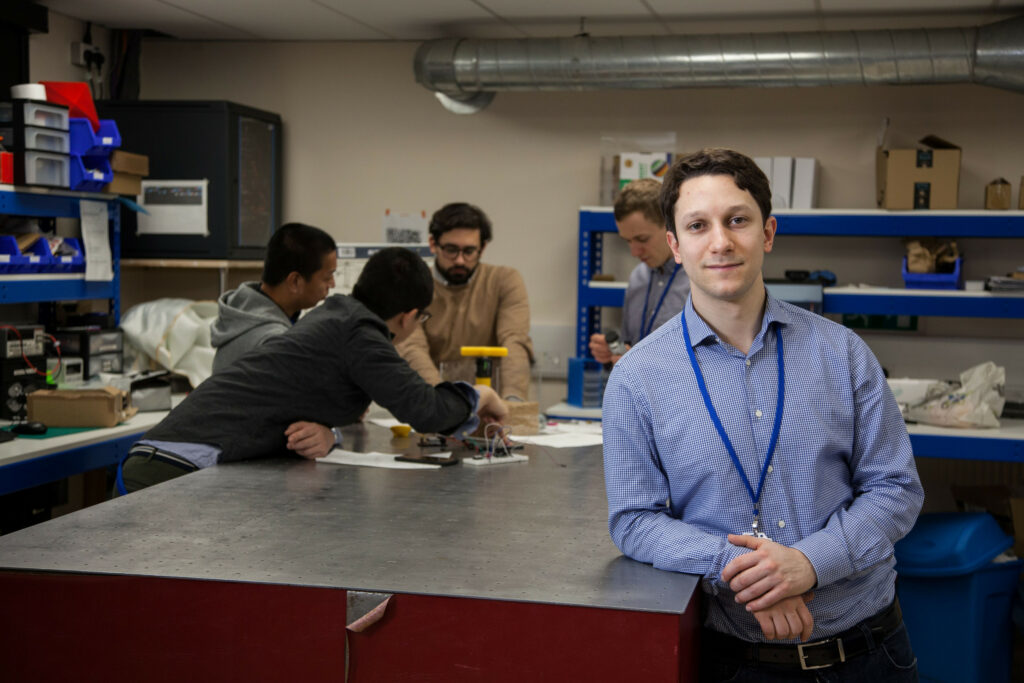Crover robot: The future of grain management with precision monitoring

Designed to navigate effortlessly through bulk grains like wheat, barley, and oilseeds, the Crover offers unprecedented accuracy in monitoring and maintaining grain quality. As the company from Scotland prepares to launch new models and expand globally, it promises to reshape how the industry approaches grain management.
The state-of-the-art robot allows farmers and grain operators to remotely oversee storage conditions, reduce claims and rejections, enhance safety, and detect spoilage with remarkable precision, using a unique ‘swimming’ technology. The concept for Crover originated with Founder and CEO Dr. Lorenzo Conti, who developed the idea during his PhD research at the University of Edinburgh.
Conti explains, “Initially, I had various ideas for the robot’s applications. Given our reliance on food and the environmental benefits of reducing grain waste, I began discussing these concepts with contacts in grain storage and farming. The enthusiasm for a solution that addressed multiple challenges was clear. People seem to be very excited about this kind of robot. There weren’t many solutions that ticked all the boxes.”
We are approaching a point where we can provide substantial industrial utilities
The current version of the Crover is equipped with sensors for moisture, temperature, and CO2, and features an additional module capable of collecting physical samples of more than 6 litres. “We have more plans in store”, Conti notes. “We are approaching a point where we can provide substantial industrial utilities.”
Text continues below picture

Commercial version
The Crover family includes a versatile model that can move in any direction, though the standard model is designed for surface movement. The Crover can carry payloads of up to 50 kilograms while remaining stable on slopes up to 60 degrees.
Additionally, it can take samples or measurements from beneath the grain surface with an onboard probe. The current commercial version of the robot has a camera on-board and the movement or actions can be controlled by a joystick. The camera feed and measurements can be seen on a mobile phone in an app.
We expect to release a fully autonomous version in the middle of next year
“If connectivity is unavailable, data can be downloaded locally. When there is connectivity, data can be uploaded to the cloud, where historical data and summaries are available on our web platform. However, the current system still requires operators to act on the data,” Conti adds.
“We have been working on enhancing analytics, and on automation of the system”, he points out. “Obviously, farmers and grain storage professionals have limited time. We are getting closer. We expect to release a fully autonomous version in the middle of next year.
Text continues below picture

Minimising chemical interventions
Powered by an electrical cable, the Crover avoids issues of getting lost in the grain and ensures safety. “But a new battery model is also in development, for the cases where people really need to operate the robot remotely”, Conti says.
Testing of a prototype at ABP’s Port of Ayr in Scotland has shown promising results in maintaining grain quality, reducing energy costs, and minimising chemical interventions, thus lowering grain claims, rejections, and labour costs associated with pest management.
Traditionally, checking moisture levels in stored grain is a manual, time-consuming process prone to inaccuracies and risks, such as avalanches when accessing high grain stacks. Crover aims to reduce these risks and costs.
To a certain extent, Crover helps to reduce energy costs from cooling and aeration, and helps to avoid unnecessary chemical interventions. Conti: “It relies on what the operator does with the data we provide. Currently, it is up to them to intervene and act on it. But we have plans to eventually integrate the system with control systems and automate the process.”
Text continues below picture

Automation and price
“If the temperature of moisture level is a bit too high for example in an area, we could automate the cooling and aeration. We also started looking at delivery of natural pesticides, but that is a more complex intervention. That is one of the long term goals. And we have been working on a version of the robot, that allows people to integrate their own sensors in the system, as modules.”
Currently, the focus is on larger, centralised grain storage operations
The Crover has garnered significant interest, with feedback frequently inquiring about availability. Due to high demand and limited production, the company has partnered with select operators in the UK and Italy. In September, Crover will release 22 to 30 new robots, with further expansions planned.
Looking ahead, Crover intends to enter the North American and the Australian markets. The standard Crover model is priced at US $21,000, with the version including the sampling module costing US $28,000. Crover also offers subscription options in some regions. Currently, the focus is on larger, centralised grain storage operations, though there is ongoing collaboration with farmers as well.




